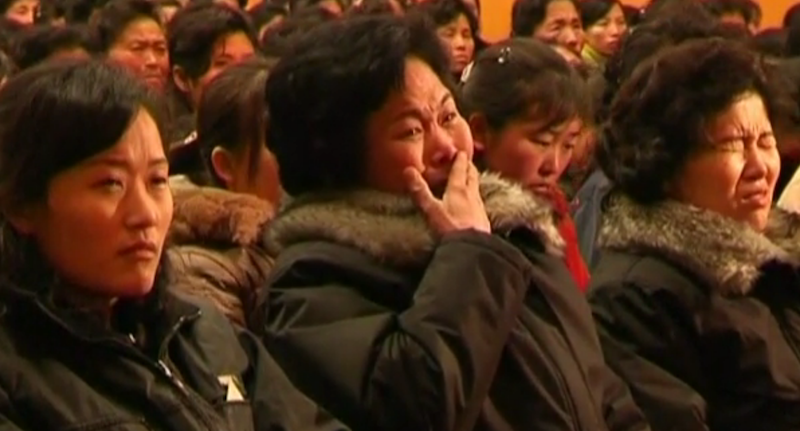Kim Jong-Il's Natural Death Typical for Dictators

The death by natural causes of Kim Jong-Il highlights a possibly unpleasant truth about repressive dictators: Many, if not most, end up living long lives and dying peacefully.
Those who live by the sword don't necessarily die by it, according to "The Great Big Book of Horrible Things: The Definitive Chronicle of History's 100 Worst Atrocities" (W. W. Norton & Company, 2011). In it, Matthew White tracked the fates of the leaders most responsible for the 100-deadliest human events. A majority, he found, lived out their natural life spans in peace.
"About 60 percent of the individual oppressors and warmongers who were most responsible for each of these multicides lived happily ever after," White wrote.
For every Moammar Gadhafi killed in the streets by angry citizens, there is a Joseph Stalin, dead at 74 of a stroke. According to White, 49 percent of those responsible for the major massacres of history ruled until their deaths by natural causes. Another 11 percent enjoyed a peaceful retirement, while 8 percent were exiled before natural causes took their last breaths.
Of those whose ends were not as pleasant or natural, 9 percent were put on trial and executed, 8 percent were assassinated, 7 percent died in battle, 4 percent were imprisoned and 4 percent committed suicide. [How 13 of the Worst Dictators Died]
Kim Jong-Il died at age 69 of a heart attack Dec. 17, according to North Korea state television.
Perhaps the lengthy lives have to do with the spoils of leadership, as studies of U.S. presidents show that despite the stresses of being in charge, these men live just as long or longer than their contemporaries.
Sign up for the Live Science daily newsletter now
Get the world’s most fascinating discoveries delivered straight to your inbox.
Mass Mourning
When dictators do die of natural causes, they rarely seem to take advantage of the warning signs of age and debilitation, according to Robert Gellately, a professor of history at Florida State University.
"The communist countries, from Lenin on, have prided themselves on being modern, but the one thing they never figured out is how to manage the transition when the leader passes away," Gellately told LiveScience. "Usually what happens is the leader, when they start to get ill … they talk about who might be suitable to replace them but they invariably point to all the flaws. They don't embrace mortality easily."
The result, Gellately said, is often a behind-the-scenes power struggle. It's not easy for outside observers to tell who is in charge, he said. When Stalin came to power in the 1920s, he said, foreign heads of state were flummoxed as to who really was pulling the strings — ironic, Gellately said, because historians would later realize that Stalin made "absolutely every decision."
Stalin's death, in fact, might show some parallels to the death of Kim Jong-Il, Gellately said. Despite Stalin's repression, he was widely mourned.
"There was an enormous outpouring of sorrow, even in the Gulag," Gellately said. "There were prisoners who cried."
Likewise, video footage from North Korea shows citizens weeping openly in factories and streets.
"It's hard to know if it's genuine sorrow or if it's uncertainty about the future," Gellately said. "The motives of why people are moved are infinite, but it's an interesting phenomenon."
You can follow LiveScience senior writer Stephanie Pappas on Twitter @sipappas. Follow LiveScience for the latest in science news and discoveries on Twitter @livescience and on Facebook.

Stephanie Pappas is a contributing writer for Live Science, covering topics ranging from geoscience to archaeology to the human brain and behavior. She was previously a senior writer for Live Science but is now a freelancer based in Denver, Colorado, and regularly contributes to Scientific American and The Monitor, the monthly magazine of the American Psychological Association. Stephanie received a bachelor's degree in psychology from the University of South Carolina and a graduate certificate in science communication from the University of California, Santa Cruz.









